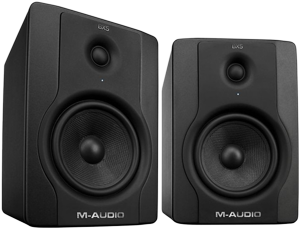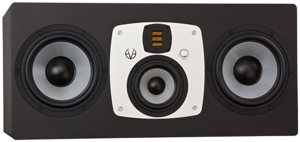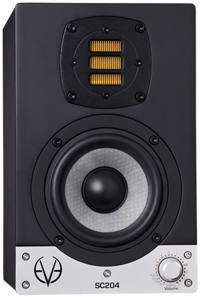 Why would anyone need directions for setting up reference monitors? Just put them on your desk, and you're done, right? Well, it turns out that reference monitors are actually one of the most important and influential elements of your studio, and can really make or break the performance of your whole setup. It's not that you have to spend a lot of money on them — with a good knowledge of monitoring fundamentals and a little bit of experimentation, you can put together an accurate system on any budget.
Why would anyone need directions for setting up reference monitors? Just put them on your desk, and you're done, right? Well, it turns out that reference monitors are actually one of the most important and influential elements of your studio, and can really make or break the performance of your whole setup. It's not that you have to spend a lot of money on them — with a good knowledge of monitoring fundamentals and a little bit of experimentation, you can put together an accurate system on any budget.
General optimisation
Whether you are recording, mixing or mastering, your monitors are your primary and most important point of reference. Good studio monitors should let you hear exactly what's been recorded. In other words, monitors need to demonstrate a relatively flat frequency curve, instead of boosting certain frequencies to make music sound more pleasing to the ear. They should also be rugged enough to withstand the demands of the project studio — providing an accurate, uncolored response at a wide range of volume levels.
How Do I Select The Right Monitors?
Choosing the right reference monitors largely depends on how you plan to use them. Singer/songwriters may be fine with a compact set of 5" monitors, while urban/hip-hop producers will likely choose a larger monitor plus a subwoofer to achieve greater bass response. Mo st studio owners need a stereo configuration, but a surround sound setup may be necessary if you produce sound for TV, film or games.
st studio owners need a stereo configuration, but a surround sound setup may be necessary if you produce sound for TV, film or games.
Since the monitoring system plays such a crucial role in the studio, it's important to get high-quality monitors that fit your needs. It's always better to visit us and listen to a few different  models before deciding.
models before deciding.
- Does the bass sound tight and controlled, or uneven and muddy?
- Does the stereo field sound sufficiently wide, allowing you to hear the separation between instruments?
- Are the high-end frequencies smooth and crisp, or harsh and fatiguing?
- Do I hear details in the mix that I've never heard before?







